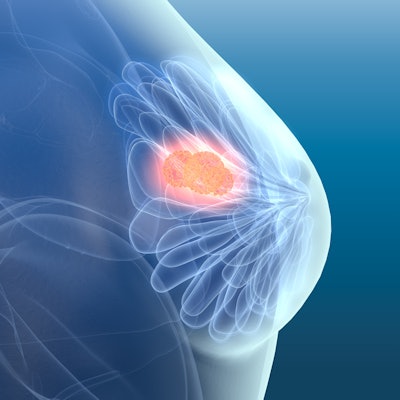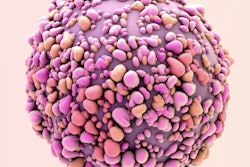
High breast density does not significantly impact breast cancer survival once the cancer is established, according to Swedish research published May 23 in the Breast.
A group led by Dr. Li Sturesdotter from Lund University also found that mammographic tumor appearance does not appear to impact prognosis.
"For healthcare professionals, one implication could be that women with dense breasts or certain tumor features do not require additional surveillance regarding prognosis once breast cancer is diagnosed," Sturesdotter and colleagues wrote. "However, this might have to be reevaluated as other imaging modalities are being increasingly used."
High breast density is a known risk factor among radiologists for breast cancer due to creating a masking effect on mammography. Previous studies suggest that cancer in dense breasts could have a worse prognosis since they may be discovered at a later stage.
Tumor appearance on mammography is also tied to histopathological tumor characteristics, with spiculation often meaning better survival rates. Sturesdotter and colleagues, however, noted a lack of data exploring the combination of breast density, tumor appearance, and mode of detection in relation to breast cancer survival. The researchers wanted to find this out by using data from the Malmö Diet and Cancer Study (MDCS).
They included data from 1,116 women from the cohort, all of whom were diagnosed with breast cancer from 1991 until the end of 2014. The group also divided tumor appearance into five groups: distinct mass, ill-defined mass, spiculation, microcalcification, and tissue abnormality.
The researchers found that the hazard ratio (HR) for breast cancer-specific death in women with dense breast parenchyma was 1.08 for the entire study population. This remained "virtually unchanged" after adjustment for various factors, such as age at diagnosis, body mass index (BMI), and histological grade, among others.
When compared with a reference HR of 1 for nondense breasts, women with screening-detected tumors and dense breasts had a HR of 1.45 (95% confidence interval [CI], 0.87-2.43; p = 0.153) for breast cancer-specific death. After adjustments, however, the HR dropped to 1.29 (95% CI, 0.65-2.53; p = 0.465).
"Although not significant, this might be suggestive of increased mortality in this group, but the results should be interpreted with caution," the study authors wrote.
In other findings, the group also found no significant associations with survival using criteria from the BI-RADS fifth edition. The HR and adjusted HR of breast cancer-specific death for heterogeneously dense and extremely dense categories were 0.93 and 0.8, respectively. These were compared with least dense categories, which had an HR of 1 for reference.
For tumor appearance meanwhile, the researchers found an increased HR for breast cancer death in ill-defined mass (1.64) and tissue abnormality (2.37) in crude analysis. However, these results were insignificant after adjustments. The team also found no significant findings for stratified analysis on screening-detected cancers.
Moreover, spiculated tumor appearance did not have a statistically significant impact on survival, with an adjusted HR of 1.24. For the entire study population, the researchers found no significant impact on survival concerning spiculated tumors at five years after diagnosis. However, for women with clinically detected tumors, they found that spiculated appearance was significantly tied to increased risk of breast cancer death compared to distinct mass. This included an adjusted HR of 2.77.
Sturesdotter and co-authors suggested that based on their results, breast density does not seemingly lead to a worse prognosis once breast cancer is diagnosed. However, they cautioned that healthcare professionals "must convey this knowledge in an understandable manner" when talking about risk and prognosis to patients.
They also wrote that mammography images hold important information for tumor characteristics that may improve prognostic and predictive clinical decision-making at an earlier decision.



















